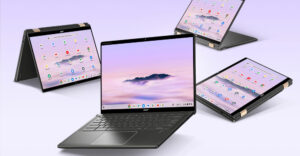
Advanced Micro Devices (AMD) will cease manufacturing the money-losing Personal Internet Communicator (PIC) in the third quarter of 2006, according to a fiscal report filed with the SEC last week. The line of inexpensive PCs was designed to help consumers in developing countries gain Internet access.
Introduced in 2004, the PIC was supposed to be a long-term investment for AMD, “so to say it’s not making money seems a little odd. In the early years of any investment, you often have a negative cash flow, because it’s a time when you are building up a business,” Endpoint Technologies Associates Principal Analyst Roger Kay told TechNewsWorld.
The 50×15 Initiative
The PIC was developed as part of AMD’s global “50×15” initiative, which was aimed at bringing Internet and computing capabilities to half the world’s population by 2015. The unit was marketed in Brazil, China, India, Mexico and Russia.
As recently as August 2006, AMD led a consortium to launch three digital inclusion programs in Ugandan schools where the PIC was one of the deployed solutions. In addition, the company recently completed initiatives in Mexico.
Industrial Accolades
Ironically, the PIC won a 2006 Industrial Design Excellence Award from BusinessWeek and was recognized by the Industrial Design Society of America (IDSA) just months ago.
In July, IDSA judges cited as winning criteria the PIC’s simple design, which used only six screws and required no special tools, reducing production and transportation costs. As another key reason for the award, the IDSA panel credited the unit’s simplicity, which eliminated installation confusion.
Despite the industry recognition and AMD’s desire to fulfill a philanthropic vision, the company could not continue to lose money on the PIC.
Cashing Out
In a Securities and Exchange Commission filing last week, AMD said that the US$249 machine failed to generate significant sales and, unfortunately, many of the units were returned. Nearly $16 million in operating losses during the first nine months of 2006 were due to PIC-related write-offs, according to the filing.
“If you are going to try to sell to the developing world, you have to be prepared to spend some money for a long period of time in order to establish a position. Two years is not a long period of time. Sixteen million dollars for AMD is chump change,” Kay noted.”So how are they going to do 50X15 without the PIC?”
Supporting Its Partners
AMD claims that it will not abandon the 50X15 initiative. The company plans to continue its partnerships with the One Laptop Per Child nonprofit group — which builds $100 laptops — and with Microsoft’s pay-as-you-go computing strategies.
“We are expanding what we started with the PIC, developing new business models and new technologies that will be introduced in emerging markets,” the company said.





















































There is more to the story than the $16 million loss. The Geode processors have historically been very expensive to manufacture, and AMD actually risked additional losses with each sale. The Geode plan would only be successful with advances in manufacturing. (Read AMD’s 10-K reports for the last few years for more info.)
Also, I’m not entirely sure why this shows up in Linux Insider – the only Linux involved was the software update infrastructure. The PIC operating system was a Windows CE implementation, and the firmware precluded booting other system – it required a specific boot sector flag. (See the General Software documentation for more info.)